
STUDEBAKER NATIONAL MUSEUM
AUGUST 2010 VISIT
STUDEBAKER PROTOTYPES
Gold Sedan Prototype Two-Door Side
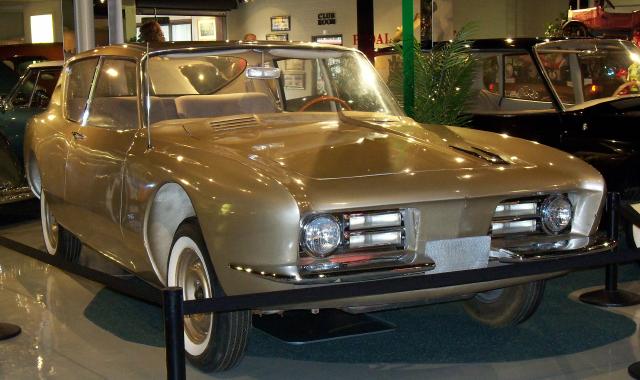
Black Sedan Prototype Four-Door Side
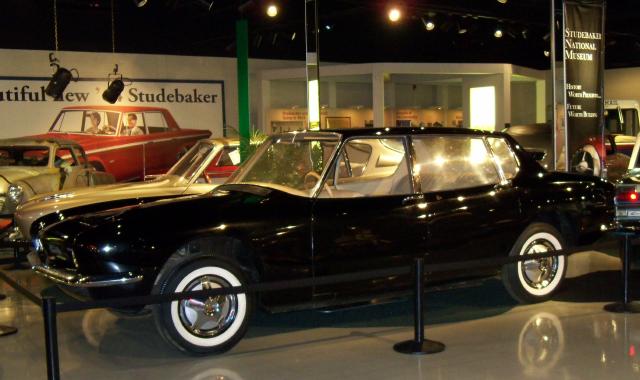
Gold Sedan Prototype Second View
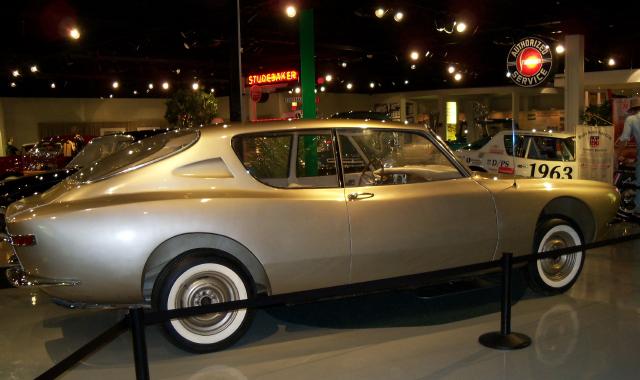
Among the more interesting exhibits on display were two sedan prototypes designed by Raymond Loewy Associates and built in Europe to test Avanti-like styling for the regular sedan line.
Both use the common styling study feature of having two doors on one side and four doors on the other side.
Unlike the Avanti, which has a fiberglass body, both have steel bodies which would be appropriate for high volume production.
The black prototype features a plush cloth interior with a rear seat center armrest and late model Lark-type instruments set in a simulated wood grain dashboard.
It is amazing that these have survived as automakers typically destroyed their styling prototypes.
MORE STUDEBAKERS ON DISPLAY
1932 President Convertible Roadster
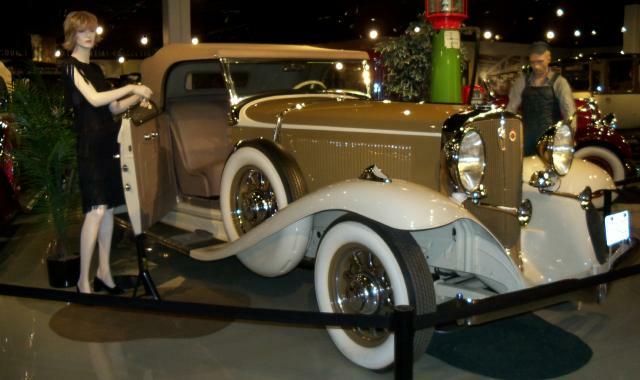
1935 President Convertible Sedan
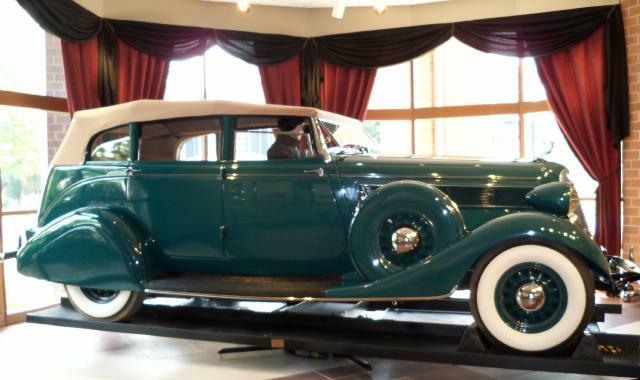
1952 Commander Hardtop

1953 Starliner Hardtop
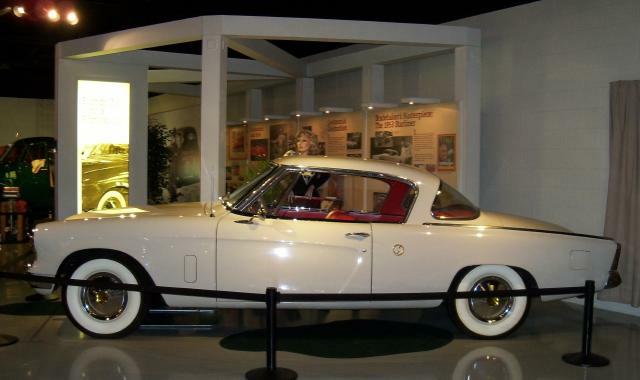
Studebaker Postal Zip Van
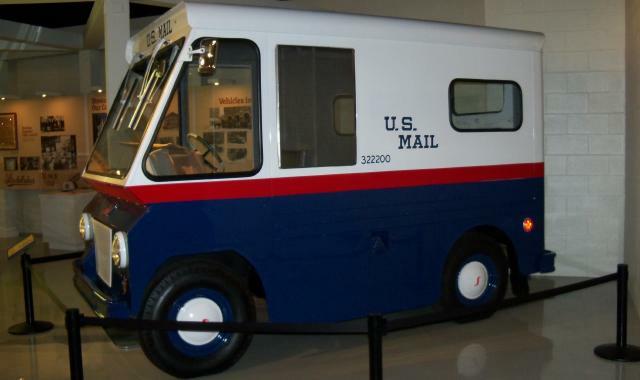
The 1935 President Convertible Sedan is owned by Dr. George Vassos of Westfield, Massachusetts.
This custom aluminum body car was built at the Studebaker plant in Walkersville, Ontario.
Its first owner was Captain Evan Roberts who purchased it from Jameson Motors in Victoria, British Columbia.
Here is a front view of this unique automobile.
This fine car car was on loan to the Museum at the time of our visit.
The Zip Van was donated to the Museum by the South Georgia Chapter of SDC.
Zip Vans used the 112 horsepower overhead valve "Skybolt" six that was an adaptation of the old Champion flathead engine.
The Zip Van remained in production after other Studebaker civilian truck production ended in order to complete the government contract.
Here is the story of the restoration of the Museum's Zip Van.
IN THE MUSEUM BASEMENT
1958 Scotsman Sedan
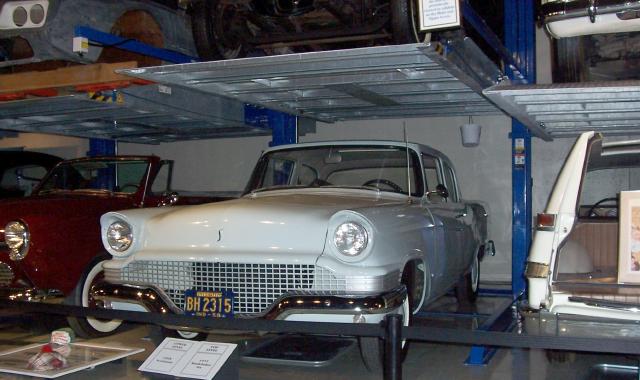
Porsche Powered 1959 Lark

Cabover Truck Prototype

Wartime Blackout 1942 Champion
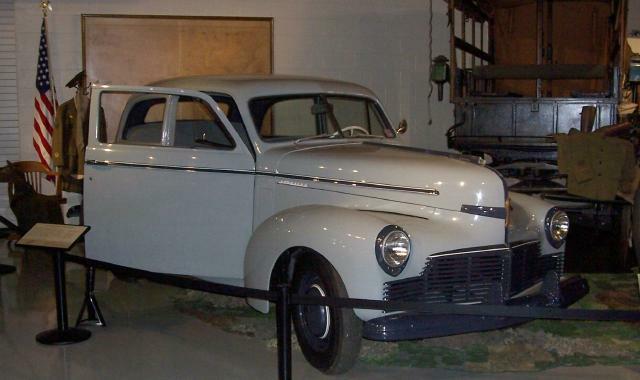
These pictures were taken in the basement area which is open to the public.
As can be seen in the first and third pictures, some of the cars are stacked on lifts to maximize the use of space.
Some of the vehicles in the basement are future projects while others are in excellent condition as they sit.
For example, the 1958 Scotman Sedan in the picture above is an outstanding example, perhaps the best I have seen in some time.
The Wartime Blackout 1942 Champion Sedan is also a fine example of a unique model.
For some reason the Museum's M29 Weasel amphibious military vehicle was downstairs at the time of our visit.
Among the more interesting cars in the basement was a Porsche powered 1959 Lark.
As the story goes, Curtiss-Wright engineers removed the entire drive train and installed a rebuilt 1500 cc Porsche boxer engine, suspension, and transaxle in the rear of the car.
The project went nowhere, but the car has survived.
Another cool vehicle on display in the basement was the 1963 Studebaker Westinghouse Pickup Truck prototype.
This was a cab-over-engine design with easy to manufacture flat body panels and lots of glass for great visibility.
The closing of the South Bend plant in December 1963 ended this project along with all Studebaker truck production.
The Studebaker National Museumís collection totals over 120 vehicles with about 70 vehicles on display at any one time.
Some of the display vehicles are on loan from individuals or other museums.
The Museum Archives contain the records of the Studebaker Corporation including production orders for Studebakers produced from 1936 to 1966 which can be ordered from the Museum Store.
The Museum is open seven days a week but is closed on major holidays.
It is a great place to visit, particularly for those who like old cars, not necessarily just Studebakers.
Return to Stude Stuff Page
|

